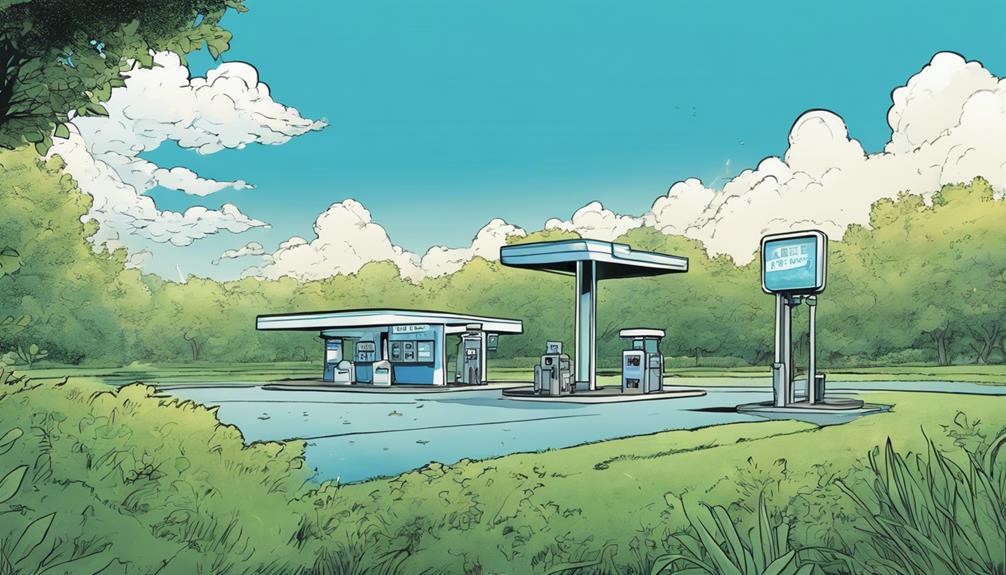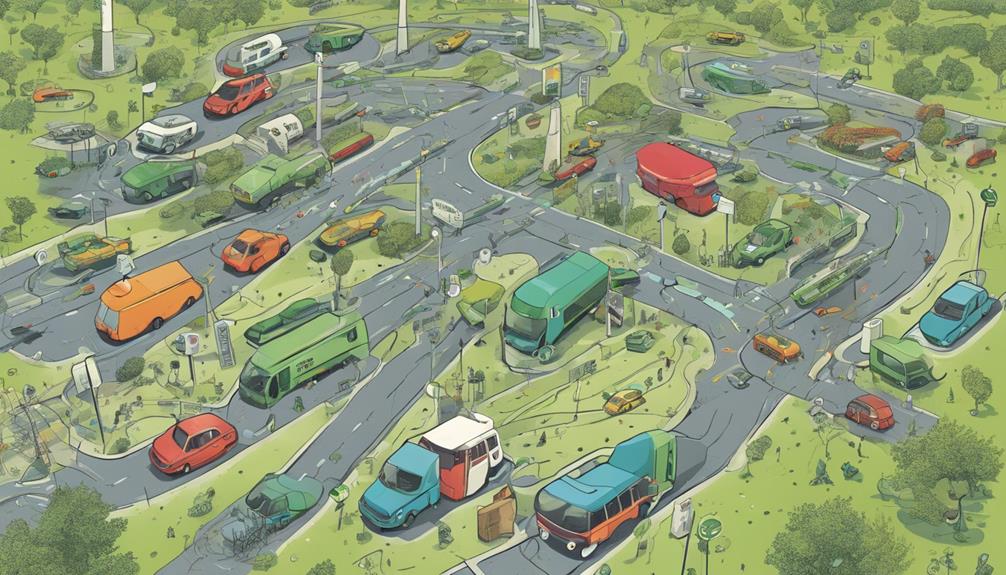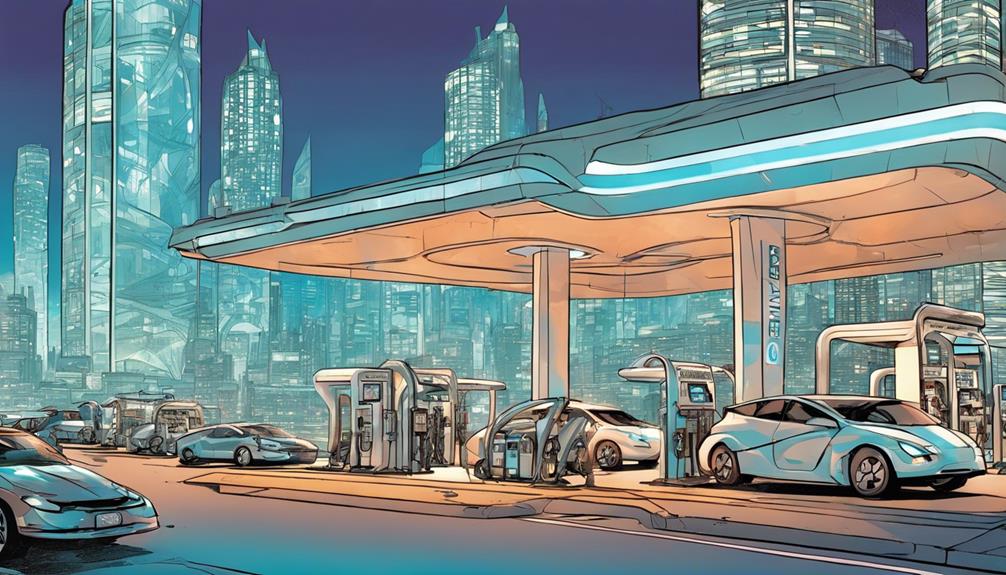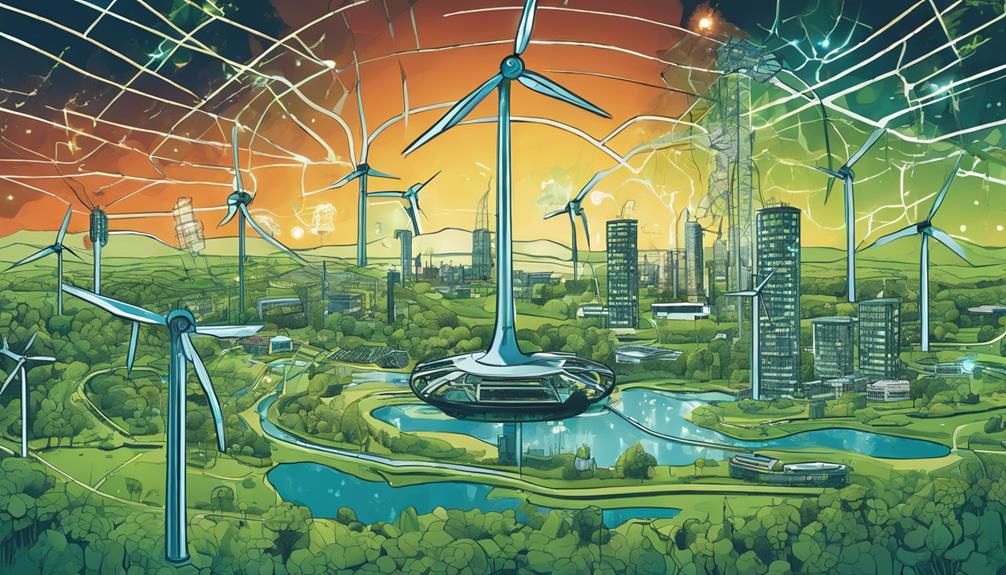The UK government has laid out an all-encompassing plan to expand its hydrogen fuel station network, aiming to overcome the current limitations of only a few operational stations and pave the way for widespread adoption of fuel cell vehicles. The strategy addresses accessibility challenges, particularly in rural areas, through targeted investment and collaborative efforts. With a detailed incentive framework in place, the government is committed to increasing funding for new stations and offering subsidies for vehicle purchases. As the UK works to decrease its carbon footprint, this expansion plan is a vital step towards a cleaner, more environmentally friendly transportation system. This development is just the beginning of a larger shift towards a hydrogen-powered future.
Key Takeaways
- The UK aims to expand hydrogen fuel station coverage to support its carbon reduction goals, with targeted investment and collaborative efforts.
- Strategic placement of new stations is crucial to address accessibility challenges, particularly in rural areas.
- The government has established a detailed incentive framework, including grants, subsidies, and funding for new stations and vehicle purchases.
- Efficient refueling infrastructure is being developed, with quick refueling times of 3-5 minutes, enhancing the practicality of hydrogen vehicles.
- The expansion plans prioritize environmental benefits, including significant reductions in greenhouse gas emissions and minimal environmental impact.
Current State of Hydrogen Infrastructure

As the UK works to decrease its carbon footprint and shift towards a low-carbon economy, the current state of its hydrogen infrastructure remains a significant bottleneck, with a limited number of operational fuel stations hindering the widespread adoption of hydrogen fuel cell vehicles.
The high infrastructure development and maintenance costs pose a significant challenge to the expansion of the network. Moreover, the limited availability of hydrogen fuel cell vehicles slows down the growth of the industry.
Despite these challenges, the UK government has set a target of 65 operational stations by 2032, highlighting the need for investment to overcome the current limitations and expand the network.
Accessibility Challenges and Solutions

Rural areas in the UK, in particular, face significant accessibility challenges, with limited hydrogen fuel station coverage hindering the adoption of hydrogen-powered vehicles in these regions. The lack of infrastructure in rural areas poses a significant barrier to the widespread adoption of hydrogen fuel cell vehicles. To address this, strategic placement of hydrogen fuel stations is pivotal.
To improve accessibility in rural areas, the following solutions can be implemented:
- Targeted investment: Focus on investing in rural areas with high demand for hydrogen fuel cell vehicles.
- Collaborative efforts: Collaborate with local authorities and private stakeholders to develop infrastructure in rural areas.
- Mobile refueling units: Deploy mobile refueling units to remote areas, providing temporary solutions until permanent stations are built.
- Incentivizing rural development: Offer incentives to encourage private companies to develop hydrogen fuel stations in rural areas.
Environmental Benefits of Hydrogen Fuel

Hygen fuel, a clean and environmentally friendly energy source, offers a significant reduction in greenhouse gas emissions and air pollutants, making it an attractive alternative to traditional fossil fuels.
The advantages of hydrogen fuel are evident in its minimal environmental impact, producing only water vapor and heat as byproducts. In contrast, traditional fossil fuels release harmful emissions, contributing to climate change and air pollution.
Government Incentives and Expansion Plans

The UK government has established a detailed incentive framework, including grants and subsidies, to encourage the adoption of hydrogen fuel cell vehicles and drive the expansion of the country's hydrogen refueling infrastructure.
To support this growth, the government has outlined the following key plans:
- Increased funding: Allocating resources to develop new hydrogen refueling stations and upgrade existing ones.
- Targeted subsidies: Offering incentives for individuals and businesses to purchase hydrogen fuel cell vehicles.
- Collaborative partnerships: Working with private stakeholders to share costs and expertise in expanding the network.
- Infrastructure investments: Upgrading transportation routes and hubs to accommodate hydrogen fuel cell vehicles.
These initiatives aim to create a thorough network of hydrogen fuel stations, meeting market demands and promoting a sustainable energy future.
Efficient Refueling for Hydrogen Vehicles

As the UK's hydrogen fuel station network expands, an important aspect of its development is the effective refueling experience it provides to drivers of hydrogen-powered vehicles. Refueling a hydrogen vehicle typically takes 3-5 minutes, offering a convenient alternative to traditional gasoline stations.
This quick refueling time is a significant advantage, contributing to the appeal of hydrogen fuel cars. The efficiency of refueling is vital, as it enhances the practicality and usability of hydrogen vehicles.
As the network expands, maintaining fast refueling times is essential to guarantee a seamless experience for drivers. By prioritizing effective refueling, the UK's hydrogen fuel station network can effectively support the growing demand for eco-friendly transportation options.
Frequently Asked Questions
How Will Rural Areas Access Hydrogen Fuel Stations During the Expansion Phase?
Rural areas will access hydrogen fuel stations through strategic placement and investment in infrastructure development, addressing the current lack of accessibility, and ensuring a thorough network that meets the needs of rural communities.
Can Existing Gas Stations Be Converted Into Hydrogen Fuel Stations?
Like a puzzle piece fitting seamlessly, existing gas stations can be converted into hydrogen fuel stations, leveraging existing infrastructure to accelerate expansion, reducing costs and environmental impact, and streamlining the shift to a hydrogen-based transportation ecosystem.
Are Hydrogen Fuel Stations Compatible With All Hydrogen-Powered Vehicles?
Hydrogen fuel stations are designed to be compatible with most hydrogen-powered vehicles, adhering to industry standards, ensuring seamless refueling for a range of models, and facilitating widespread adoption of eco-friendly transportation options.
Will Hydrogen Fuel Stations Offer Additional Services Like Food and Restrooms?
With only 14% of UK citizens living within 1 mile of a hydrogen fuel station, it's essential to enhance the user experience. While there are no immediate plans to offer additional services like food and restrooms, future stations may incorporate amenities to increase appeal and convenience.
Can Individuals Install Hydrogen Fueling Infrastructure at Their Homes or Offices?
Currently, individuals are not permitted to install hydrogen fueling infrastructure at their homes or offices in the UK, due to safety and regulatory concerns, as well as the need for specialized equipment and training.
How Will the Expansion of Hydrogen Fuel Stations in the UK Impact the Adoption of Hydrogen Fuel Cells in Cold Climates?
The expansion of hydrogen fuel stations in the UK will greatly impact the adoption of hydrogen fuel cells in cold climates. As these stations become more accessible, it will encourage more people to embrace the use of hydrogen fuel cells in cold climates, leading to a broader market reach.
Conclusion
The UK's hydrogen fuel station expansion strategies mark a revolutionary turning point in the country's quest for a low-carbon transportation sector.
As the network grows, it will release a tidal wave of environmental benefits, transforming the landscape of energy production and consumption.
With government incentives and expansion plans in place, the future of hydrogen fuel cell vehicles has never looked brighter, poised to change the face of transportation forever.










